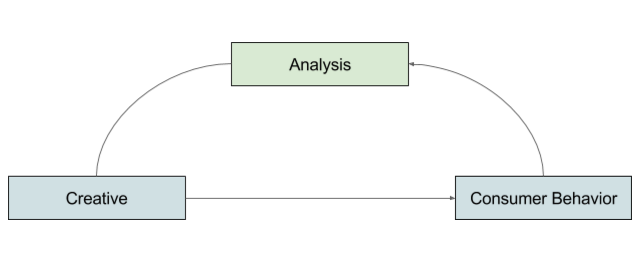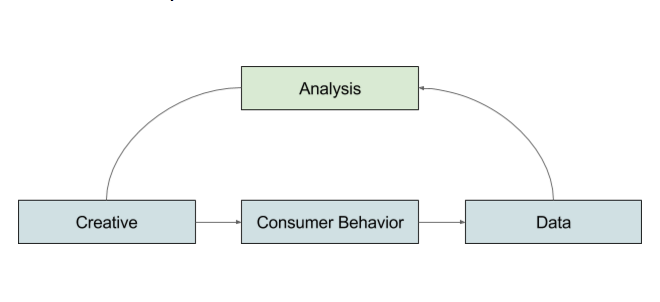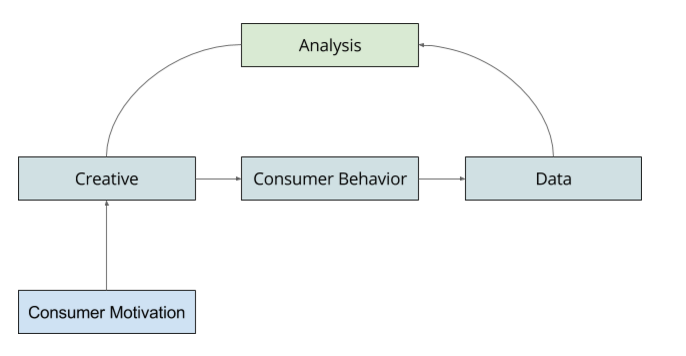Google Ads, Psychology, and the Consumer Part 1: Not Seeing the Forest for the Trees
Loves Data
Drowned in Data
In the modern digital marketplace, we have an ever-expanding array of tools, models, and metrics to allow us to examine the effectiveness and impact of our marketing on every aspect of our organisations. Nowhere is this deluge of data more prominent than in Google Ads, where the very system is built around the use of data and targeting to achieve accountability and precision of our campaigns.
Often we manipulate our campaigns in ways that would make even the most sophisticated marketing professional of the pre-internet era either green with envy or very, very nervous. But in some ways, these tools skew our insight into an overly rigid view. Too often, we look coldly at our metrics, tweaking CPC, bidding rules, and keyword targeting in order to maximise our return. We constantly think in terms of ROI, revenue, and transaction volumes. Numbers are important, but they blind us to the simple fact that our entire industry is focused on interactions involving individual people, who have distinct motives, responses, and inclinations. This fact was obvious to earlier generations of marketers and gave rise to the field of consumer psychology.
Consumer Psych: Giving the Numbers a Human Face
Consumer psychology is the art and science of studying the collective behaviour of people during their interactions with goods and services. Much of traditional marketing and retail design relies on the insights that psychology has given us. From self-service checkouts, advert design, to the easy-on-the-ears music that’s piped through every shopping centre on the planet.
Though traditional advertising has made extensive use of consumer psychology, digital advertising is far behind in exploiting this field. Only user experience and conversion optimisation have given significant thought – with the obvious exception of display and video advertising and its strong links to more traditional formats. Even in these fields, decisions are often made solely on data-driven grounds.
This is a huge and highly technical field, so we’ll only go through the basics. Even a little bit of thought about human motivation and decision-making can give you a real edge over the competition.
Motivation and Behaviour
So why is this a problem? If the numbers say we succeed, then surely following them is the best choice.
This gives us a model that works like this.

In this model, we produce creative, usually based on a hypothesis, for example, ‘people like discounts. We then use the data to find the creative that works best, and test on a new hypothesis (people like $20 off discounts).
This ignores that there is a step behind the data. People. We may think that those metrics are precisely describing behaviour online, but that isn’t exactly true, as anyone who has tried to explain what Google Analytics sessions actually are. Our metrics are abstractions that only approximately correlate with what our common understanding of what the terms are.
So now, our view actually looks like this:

Even this is an imperfect approach, as it ignores that the behaviour of the consumer is dictated by their motivation.

This motivation matters as it determines how users respond to the creative.
Take our original hypothesis: ‘users are interested in (creatives with) discounts.’ We might test an ‘only $39.95’ creative versus a ‘$20 off total purchase’ creative for an item that usually costs $60. If the ‘only $149.95’ hypothesis loses, we might assume that this hypothesis is falsified, and move to rolling out the first creative.
If we know, however, that our customers that see this creative are usually large organisations that buy in bulk, we might try another form of discount, “5% off the total cost of purchases.”
While $20 for an entire sale would be trivial to such a visitor, they would be mildly interested in a cheaper price per unit, meaning the discount creative would lose. Conversely, 5% off may equal an immediately apparent saving to the visitor, meaning that of all three creatives, it would win. A little thought about our customer base and their motivations just got us more conversions!
The Brain Convincing Itself
Interestingly, this can be true even though the saving per unit is significantly greater than the discount. Those at home who already did the math get a cookie. This is due to what is called the denomination effect, one of a group of human biases that affect how easy it is for us to undergo rational decision making. The denomination effect is our tendency to discount the importance of smaller amounts of objects, usually money. It’s much easier for us to buy two six dollar coffees a day rather than spend $500 on a decent coffee maker, even if the savings would be apparent in weeks.
Here, it works in reverse. It’s harder to imagine the savings of individual sales adding up, especially when it’s presented as ad copy and not in a final invoice. If you’re dealing with a $50,000 purchase, it’s easy to realise that you can save $2,500 immediately. By knowing this, we can design ad copy that works well long before going through multiple rounds of testing (though we should still test!) This is obviously a simple example, but at Loves Data, we’ve seen these approaches work in any number of client accounts.
Thinking More About Thinking
While it may seem that such “fuzzy” methods might have little relevance to our modern data focused approach, they can be invaluable in discovering opportunities, resolving issues, and discovering what is really going on when people interact with our websites and advertising campaigns. Over the next few weeks, we hope to show you some more examples of how knowing how people think and behave online can help you design better campaigns. We’ll also look at how you can stop yourself from falling into these traps while analysing your own accounts.
We love learning about all sorts of data, and we’re sure you’ll enjoy learning a little more about this field and how it can help you, your clients, and your customers – so stay tuned for part two of this series, or connect with us on social!

Comments